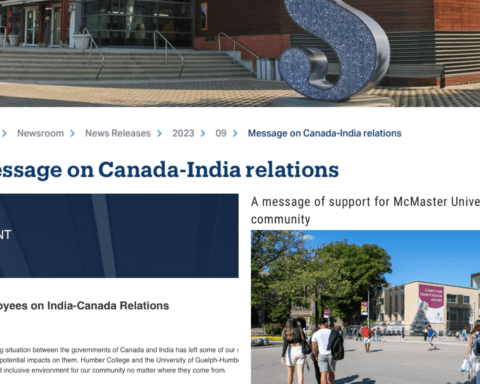I became a Canadian citizen in November last year. Like most immigrants to Canada, I am proud and grateful to join my fellow Canadians in building this extraordinary nation. That didn’t stop me, however, from sharing in the hope and ultimate frustration that the English around the world experience every four years as we watch our national team compete and fail in the World Cup. And, clearly in Toronto, I am not alone. The trans-national identities of Canadian citizens are no more evident than during the World Cup or other international sports tournaments.
According to the Economist magazine we are living in an age of diasporas. Currently over 200 million people are living in a different country than the one they were born in and that number is rising rapidly. This population, alongside their children, is creating huge ethnic diasporas who share a common culture but are geographically dispersed. The internet has enabled these diasporas to maintain an unprecedented cultural coherence through constant communication worldwide. Both immigrant Canadians and those born here are clearly comfortable embracing both their Canadian national identity alongside membership of an ethnic diaspora.
Shared experiences
The implications this has for geo-politics and public policy is widely discussed. But my interest is in the implications for business and marketing. Canadian marketers used to be able to influence the shared experiences of their consumers in limited and known geographical parameters. Now, they find themselves in an unprecedented situation where so many of the people they are trying to reach did not grow up sharing common experiences of their brands and products. We used to know that some communication may “spill over” from access to U.S. TV stations or trips across the border. But now we are in a situation where an Indo-Canadian youth may be more influenced by Pepsi India’s sponsorship of cricket than any activity Pepsi Canada initiates.
[A]n Indo-Canadian youth may be more influenced by Pepsi India’s sponsorship of cricket than any activity Pepsi Canada initiates.
In our new book, Migration Nation, Kathy Cheng and I argue that we are entering a new world of “borderless marketing”. In this new world, companies can reach large global segments that share an ethnic culture and related consumer tastes and preferences across the world. But, of course, this assumes that these diasporas are relatively homogenous in their preferences and tastes. Is that a fair assumption? Does a Chinese Canadian share a common culture with a Chinese American or a resident of China? Does their ethnicity have a stronger influence on their consumer preferences than their location or citizenship?
The answer is of course, that it depends. It depends on the product category. For categories where ethnic culture is highly influential like food you will find commonalities across the diaspora. It also depends on the characteristics of the diaspora. For example, Bollywood provides a common entertainment culture that unites many in the South Asian diaspora. Other ethnicities may not have the same unifying attributes. And, of course, the environments in which the diaspora settles influence their homogeneity.
Levels of acculturation
Our recent research compared Chinese and South Asian Americans and Canadians’ level of acculturation using Geoscape and & Environics Analytics CultureCodes (see graph). These analytical tools classify the population into five categories of acculturation based on their home language, knowledge of English/French and period of immigration. We found much higher levels of acculturation in the U.S. than in Canada for both groups. This results from a number of factors, including the “melting pot” vs. multicultural culture of each country. Of course, this means that these populations will differ and marketing efforts to reach them must navigate that difference.
But, understanding the diasporas may not be the biggest challenge faced by multinationals. The current reality for many multinationals is that many of their consumers are in some respects more global than they are. There may be good business reasons why an Asian Canadian cannot find Nescafe iced coffee here in Canada, but consumers are not aware or don’t care about the constraints of separate business units, tariffs and supply chain logistics. They are connected globally and informed of products and services that are used by their ethnic diaspora across the world.
Disconnected multinationals
Multinational companies need to become as globally connected as their consumers. I am often surprised that behind a seemingly global brand there are so many disconnected business units. For example, it should be common sense for North American companies to at least connect to their branches in Asia to simply learn more about the over 10 million Asian population living within their market borders. Yet, even that task is often not as simple as it should be. Let alone other tasks such as ensuring that products and marketing assets developed outside of North America can be effectively leveraged here.
Multinational companies need to become as globally connected as their consumers.
So, are we entering a world of borderless marketing? Slowly. There are glimpses of it. Unilever, for example, is effectively doing it. The Asian products under the Knorr brand are marketed to the Asian diaspora in North America by an international business unit independent of Unilever Canada or U.S. But, for many, the task of connecting to global diasporas and navigating the new world of borderless marketing requires not only an understanding of that new audience but a cultural and organizational shift. Canada is one of the most diverse nations in the developed world. Our population is highly globalized. Now is the time for our business culture to embrace and take a lead in the borderless future.
Robin Brown is Senior Vice President at Environics Research Group and co-author of the newly released book, “Migration Nation: A Practical Guide to Doing Business in Globalized Canada”.




